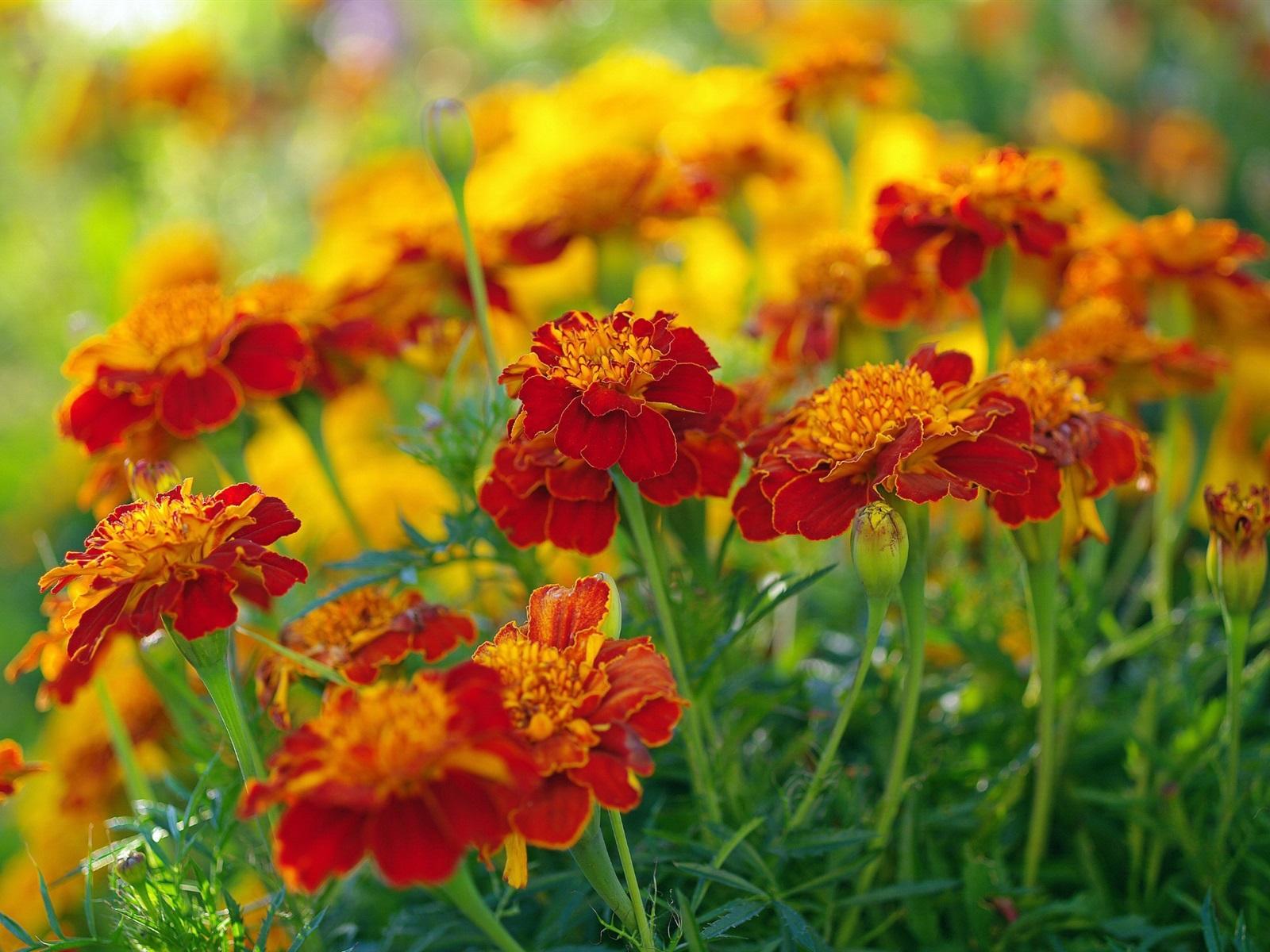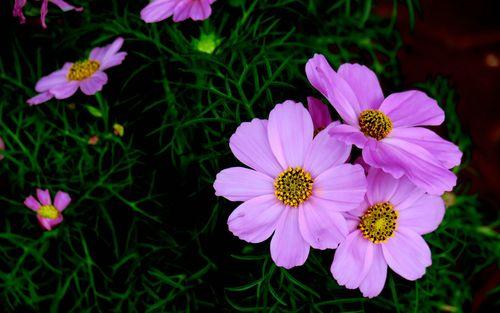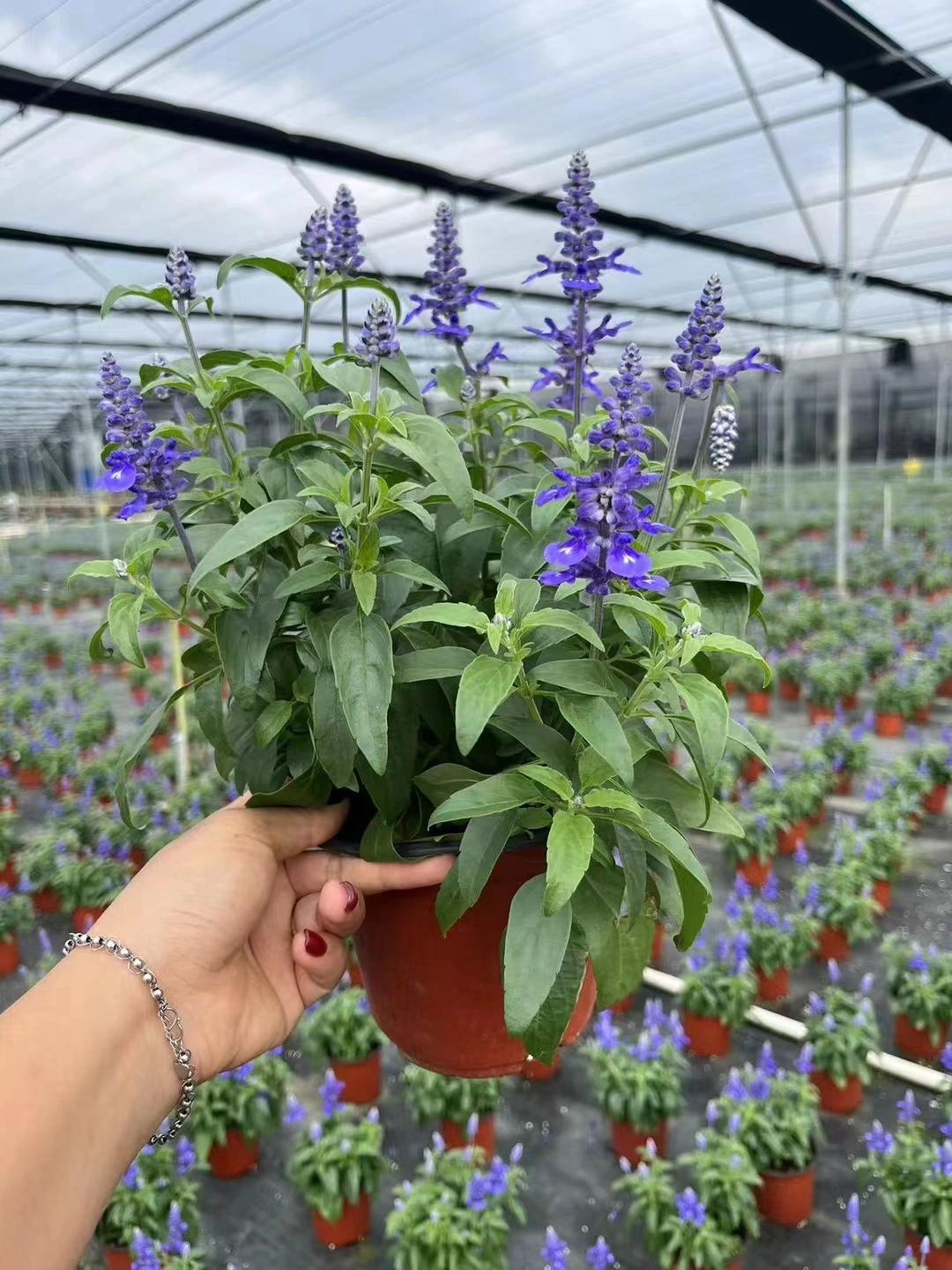The plant Nerium, commonly known as Oleander, has an interesting story. Legend says that this beautiful flower was named after the Greek god, Nerius. According to the myth, Nerius was a sea deity who transformed himself into a fragrant plant to show his love for a nymph named Nerine. Fascinatingly, Nerium is also famous for its toxic nature, which is somewhat ironic as it represents love and devotion. Despite its poisonous properties, this plant continues to captivate people with its stunning flowers and intriguing backstory.
Picture
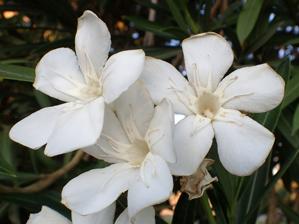
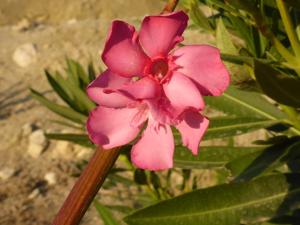
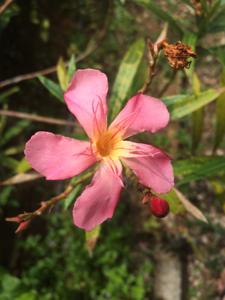
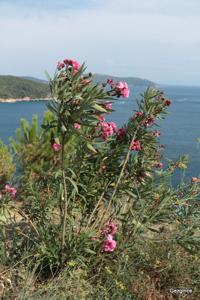
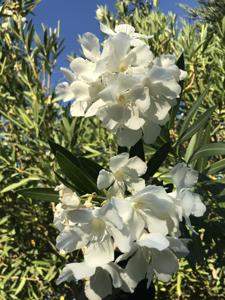
Plant some seeds now!
Short Description
Nerium oleander (/ˈnɪəriəm … / NEER-ee-əm), most commonly known as oleander or nerium, is a shrub or small tree cultivated worldwide in temperate and subtropical areas as an ornamental and landscaping plant. It is the only species currently classified in the genus Nerium, belonging to subfamily Apocynoideae of the dogbane family Apocynaceae. It is so widely cultivated that no precise region of origin has been identified, though it is usually associated with the Mediterranean Basin.
Nerium grows to 2–6 metres (7–20 feet) tall. It is most commonly grown in its natural shrub form, but can be trained into a small tree with a single trunk. It is tolerant to both drought and inundation, but not to prolonged frost. White, pink or red five-lobed flowers grow in clusters year-round, peaking during the summer. The fruit is a long narrow pair of follicles, which splits open at maturity to release numerous downy seeds.
Nerium contains several toxic compounds, and it has historically been considered a poisonous plant. However, its bitterness renders it unpalatable to humans and most animals, so poisoning cases are rare and the general risk for human mortality is low. Ingestion of larger amounts may cause nausea, vomiting, excess salivation, abdominal pain, bloody diarrhea and irregular heart rhythm. Prolonged contact with sap may cause skin irritation, eye inflammation and dermatitis.
Description
Oleander grows to 2–6 metres (7–20 feet) tall, with erect stems that splay outward as they mature; first-year stems have a glaucous bloom, while mature stems have a grayish bark. The leaves are in pairs or whorls of three, thick and leathery, dark-green, narrow lanceolate, 5–21 centimetres (2–8 inches) long and 1–3.5 cm (3⁄8–1+3⁄8 in) broad, and with an entire margin filled with minute reticulate venation web typical of eudicots. The leaves are light green and very glossy when young, maturing to a dull dark green.
The flowers grow in clusters at the end of each branch; they are white, pink to red,[Note 1] 2.5–5 cm (1–2 in) diameter, with a deeply 5-lobed fringed corolla round the central corolla tube. They are often, but not always, sweet-scented.[Note 2] The fruit is a long narrow pair of follicles 5–23 cm (2–9 in) long, which splits open at maturity to release numerous downy seeds.
Cultivation
History
An Oleander, an 1882 painting by Lawrence Alma-Tadema.
Nerium oleander has a history of cultivation going back millennia, especially amongst the great ancient civilizations of the Mediterranean Basin. Some scholars believe it to be the rhodon (rose), also called the ‘Rose of Jericho’, mentioned in apocryphal writings (Ecclesiasticus XXIV, 13) dating back to between 450 and 180 BC.
The ancient Greeks had several names for the plant, including rhododaphne, nerion, rhododendron and rhodon. Pliny confirmed that the Romans had no Latin word for the plant, but used the Greek terms instead. Pedanius Dioscorides states in his 1st century AD pharmacopeia De Materia Medica that the Romans used the Greek rhododendron but also the Latin Oleander and Laurorosa. The Egyptians apparently called it scinphe, the North Africans rhodedaphane, and the Lucanians (a southern Italic people) icmane.
Both Pliny and Dioscorides stated that oleander was an effective antidote to venomous snake bites if mixed with rue and drunk. However, both rue and oleander are poisonous themselves, and consuming them after a venomous snake bite can accelerate the rate of mortality and increase fatalities.
A 2014 article in the medical journal Perspectives in Biology and Medicine posited that oleander was the substance used to induce hallucinations in the Pythia, the female priestess of Apollo, also known as the Oracle of Delphi in Ancient Greece. According to this theory, the symptoms of the Pythia’s trances (enthusiasmos) correspond to either inhaling the smoke of or chewing small amounts of oleander leaves, often called by the generic term laurel in Ancient Greece, which led to confusion with the bay laurel that ancient authors cite.
In his book Enquiries into Plants of circa 300 BC, Theophrastus described (among plants that affect the mind) a shrub he called onotheras, which modern editors render oleander: “the root of onotheras [oleander] administered in wine”, he alleges, “makes the temper gentler and more cheerful”.
The root of onotheras [oleander] administered in wine makes the temper gentler and more cheerful. The plant has a leaf like that of the almond, but smaller, and the flower is red like a rose. The plant itself (which loves hilly country) forms a large bush; the root is red and large, and, if this is dried, it gives off a fragrance like wine.
In another mention, of “wild bay” (Daphne agria), Theophrastus appears to intend the same shrub.
Oleander was a very popular ornamental shrub in Roman peristyle gardens; it is one of the flora most frequently depicted on murals in Pompeii and elsewhere in Italy. These murals include the famous garden scene from the House of Livia at Prima Porta outside Rome, and those from the House of the Wedding of Alexander and the Marine Venus in Pompeii.
Carbonized fragments of oleander wood have been identified at the Villa Poppaea in Oplontis, likewise buried by the eruption of Mount Vesuvius in 79 AD. They were found to have been planted in a decorative arrangement with citron trees (Citrus medica) alongside the villa’s swimming pool.
Herbaria of oleander varieties are compiled and held at the Smithsonian Institution in Washington, D.C., and at Moody Gardens in Galveston, Texas.
Ornamental gardening
Variegated variety
White variety in bloom
Oleander is a vigorous grower in warm subtropical regions, where it is extensively used as an ornamental plant in parks, along roadsides and in private gardens. It is most commonly grown in its natural shrub form, but can be trained into a small tree with a single trunk. Hardy versions like white, red and pink oleander will tolerate occasional light frost down to −10 °C (14 °F), though the leaves may be damaged. The toxicity of oleander renders it deer-resistant and its large size makes for a good windbreak – as such it is frequently planted as a hedge along property lines and in agricultural settings.
The plant is tolerant of poor soils, intense heat, salt spray, and sustained drought – although it will flower and grow more vigorously with regular water. Although it does not require pruning to thrive and bloom, oleander can become unruly with age and older branches tend to become gangly, with new growth emerging from the base. For this reason gardeners are advised to prune mature shrubs in the autumn to shape and induce lush new growth and flowering for the following spring. Unless they wish to harvest the seeds, many gardeners choose to prune away the seedpods that form on spent flower clusters, which are a drain on energy. Propagation can be made from cuttings, where they can readily root after being placed in water or in rich organic potting material, like compost.
In Mediterranean climates oleanders can be expected to bloom from April through October, with the heaviest bloom usually occurring between May and June. Free-flowering varieties like ‘Petite Salmon’ or ‘Mont Blanc’ require no period of rest and can flower continuously throughout the year if the weather remains warm.
In cold winter climates, oleander is a popular summer potted plant readily available at most nurseries. They require frequent heavy watering and fertilizing as compared to being planted in the ground, but oleander is nonetheless an ideal flowering shrub for patios and other spaces with hot sunshine. During the winter they should be moved indoors, ideally into an unheated greenhouse or basement where they can be allowed to go dormant. Once they are dormant they require little light and only occasional watering. Placing them in a space with central heating and poor air flow can make them susceptible to a variety of pests – aphids, mealybugs, oleander scale, whitefly and spider mites.
Colors and varieties
Oleander flowers are showy, profuse, and often fragrant, which makes them very attractive in many contexts. Over 400 cultivars have been named, with several additional flower colors not found in wild plants having been selected, including yellow, peach and salmon. Many cultivars, like ‘Hawaii’ or ‘Turner’s Carnival’, are multi-colored, with brilliant striped corollas. The solid whites, reds and a variety of pinks are the most common. Double flowered cultivars like ‘Mrs. Isadore Dyer’ (deep pink), ‘Mathilde Ferrier’ (yellow) or ‘Mont Blanc’ (white) are enjoyed for their large, rose-like blooms and strong fragrance. There is also a variegated form, ‘Variegata’, featuring leaves striped in yellow and white. Several dwarf cultivars have also been developed, offering a more compact form and size for small spaces. These include ‘Little Red’, ‘Petite White’, ‘Petite Pink’ and ‘Petite Salmon’, which grow to about 8 feet (2.4 m) at maturity.

